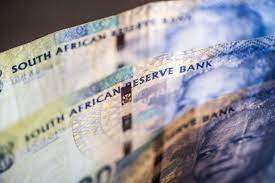South Africa’s well-developed financial system has led to increased access to credit. While this supports economic growth, overextension by households can have unintended negative consequences, says Joseph Phiri, certified financial planner at Alexander Forbes.
Phiri said that debt to disposable income for South African households has increased from less than 60% before 1994 to the current level of around 75%, which is higher than the long-term average of 70% according to the South African Reserve Bank (SARB).
“This means that households spend three-quarters of their take-home pay on debt and only have a quarter of their salary to spend on everything else. This worsens if the interest rates increase and the cost of paying the debt rises,” he said.
Phiri said that these figures exclude loans from informal credit sources such as loan sharks popularly known as “Omashonisa”.
As the name suggests (killers or sinkers), predatory lending can wipe all future income of households and lead to unhealthy finances.
As these microfinancing options are illegal in South Africa, there is no available data to show exposures and costs to households. They are, however, extremely expensive with monthly interests possibly as high as 20% to 30% repaid with the capital, he said.
Phiri said that the cost of debt depends on the type of debt – there are two main categories:
Secured credit – borrowing against an asset for home and car loans;
Unsecured credit – credit cards, personal loans and overdrafts.
“Secured credit is generally less expensive and closely related to the prime rate. Unsecured credit attracts high-interest rates but is easier to obtain.
“Avoid unsecured credit, which is often used for consumption and not for buying durable goods,” Phiri said.
South Africa’s low savings rate stifles growth
On top of the bleak debt data, Phiri said that various research reports also show that South Africa’s household savings have been declining over the years, and is one of the lowest in developing economies.
SARB and Stats SA data shows that even though disposable incomes have been increasing, the ratio of household savings to disposable income has been negative.
“Households are saving less because they have to pay for day-to-day expenses. This has a huge impact on retirement and reliance on government for welfare,” Phiri said.
“Household savings are vital in planning for retirement, saving for a rainy day, accumulating assets, saving for investment and settling debt as proven by various economic studies.”
Businesstech

